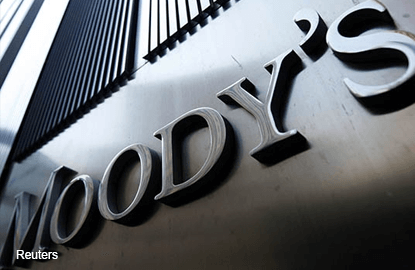
KUALA LUMPUR (Feb 6): Moody's Investor's Service says that the negative pressure on the ratings on non-financial corporates seen in 2016 will likely moderate over the 12 months of this year, according to a just-released report authored by the group's credit officer Clara Lau titled "Credit Strategy & Standards: Asian Non-Financial Corporates' Negative Rating Trend Will Likely Moderate in 2017".
"Our expectation that the negative rating trend will moderate in 2017 reflects the partial recovery made by commodities prices, the fact that the monetary policy of major central banks — with the exception of the US Fed — will likely stay accommodative, continued solid growth in the US, and growth in China stabilising at close to the official target," Lau said.
"At the same time, several factors will likely lead to uncertainty in the capital markets and could reverse the stabilising rating trend in 2017," she added.
According to the report, in 2016, the negative rating actions for non-financial corporates in Asia Pacific significantly outnumbered the positive ones. It also found that China spearheaded the negative numbers, accounting for 70 out of 148 of the negative rating actions.
By industry, metals and mining companies and property developers each accounted for 22 negative actions.
The report also reveals that the fourth quarter of 2016 (4Q16) saw the share of ratings representing ratings with negative outlooks or which are placed under review for downgrade stood at 29%, the lowest level for the four quarters of the year, but the result is still higher than the 19% registered at end-4Q15.
There were two corporate defaults recorded in 2016, significantly lower than the nine defaults seen in 2015.
The share of ratings with a stable outlook grew to 65% at the end of 4Q16, compared with the 60% registered over the previous two quarters.
Moody's, however, points out that there are a few factors which will lead to uncertainty in the capital markets and could reverse the stabilising rating trend in 2017, such as the US Federal Reserve's rate hikes in December 2016, and further expected hikes in 2017, which would be a negative for the companies in large US-dollar debt that do not have matching cash inflows.
The European Central Bank could reduce the scale of its monetary stimulus programme in 2017, and the Chinese government's tightening of capital outflows could also lead to increased volatility in the markets.